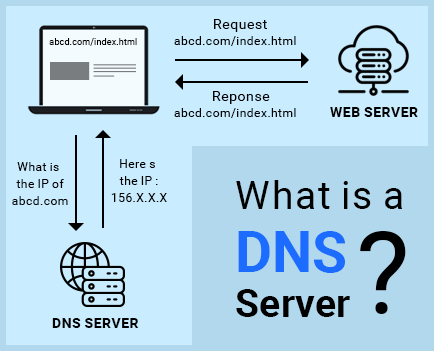
There are many options for installing a wordpress plugin to your website. The steps will vary depending on which plugin you are installing. Upload the file first. Once you have done so, click the Activate Plugin Link to get started with your plugin. Next, select the settings that the plugin should have.
Uninstalling a wordpress plugin
Uninstalling a WordPress plugin after installing it means removing all of its files from your website. This can be done for many reasons. You can also remove a plugin if it is incompatible with your theme or contains security holes. Regardless of the reason, you should be very careful when uninstalling a plugin.

Updating a WordPress plugin
There are several things you can do if your WordPress plugin doesn't work or does not update. First, log in to your WordPress website and navigate to wp-content/plugins/. Then, right-click on the plugin folder and choose rename. Add -old to the name. You may also decide to delete the plugin.
How to choose a compatible plug-in
WordPress plugins play an important role in the functionality of your website. But you shouldn't just rely upon any plugin that is available on the internet. It's important to make sure you choose the right one for your situation. There are some things you can do to make sure that you make the right choice.
Using an SFTP client
If you need to install a WordPress plugin, you can use an SFTP client to do so. Using this method, you will be able to manage your files directly on your website server, bypassing any third-party software that might interfere with your efforts. You can see that the SFTP protocol works better than FTP. Therefore, you won't be exposed to security threats.
Use a word processor
It may seem impossible to install WordPress plugins using your word processor. You just need to follow these steps. WordPress' built-in editor looks just like other word processors. It even offers additional editing tools, and the ability to print your documents.

Use a zip archive
You can upload a zip file if you don't know how to install a WordPress plug-in. Just click on the "Choose file" button and select the zip file. Important to note the extension of the zip file. Next, you will need to register the plugin for your WordPress site. To activate the plugin, click the button "Activate Plugin" once you have completed this step.
FAQ
How can I make a website for free?
This will depend on the type and purpose of your website. Are you looking to sell products, build a website, or create a portfolio online?
It is possible to create a basic website with HTML and CSS (a combination HyperText Markup Language & Cascading Style sheetss). While it's possible to create a simple website using HTML and CSS, most web developers recommend using a WYSIWYG editor such as Dreamweaver or Frontpage.
Hire a freelance web developer if your skills are not in-depth. They can help create a custom website for you based on your requirements.
Freelancers can charge a flat fee or an hourly rate. The amount of work they do within a certain time frame will affect the cost of hiring a freelancer.
For example, companies may charge 50-100 dollars an hour. For larger projects, rates are usually higher.
A lot of freelance websites offer job listings. You can search there before you contact potential developers directly.
How do I design a website.
The first step is to understand what you want your site to do for your customers. What are they looking for when they visit your site?
What issues might they be facing if they can't locate what they're looking at on your site.
Once you know this, you must figure out how to solve those problems. Make sure everything looks good on your website. It should be easy-to-use and navigate.
Your site should be extremely well designed. It should not take too much time to load. If it takes too many seconds, people won’t be able stay as long. They'll move elsewhere.
If you're going to build an eCommerce site, you need to think about where all your products are located. Do they all reside in one spot? Are they in one location?
You need to decide whether you want to sell one product at once or many different types of products. Are you looking for a single product to sell or multiple products?
Once you have answered these questions, you can begin building your site.
Now, you have to think about the technical aspects of your site. What will it take to make your site work? It will it work fast enough? Are people able to get it done quickly from their computers?
Can people buy things without having to pay more? Is it necessary for them to register before they are able to purchase anything?
These are essential questions that you need to ask yourself. When you have the answers, you can move on.
Can I create my own website with HTML & CSS?
Yes! If you've followed the steps, you should now be able create your website.
Now that you know how to create the structure of a website, you'll also need to learn some HTML and CSS coding.
HTML stands for HyperText Markup Language. It's like creating a recipe for a dish. You'd list the ingredients, instructions, along with directions. HTML allows you to indicate to a computer which portions of text are bold, italicized and underlined. It also lets you know which part of the document is linked. It's the language of documents.
CSS stands for Cascading Style Sheets. It is like a stylesheet that you use to create recipes. Instead of listing each ingredient and instructing, you can write down general guidelines for font sizes, colors and spacing.
HTML tells the browser how to format a web page; CSS tells it how to do it.
Don't worry if you don't know the meaning of either one of these terms. Follow the tutorials and you will soon be creating beautiful websites.
Do I require technical skills to design or build my website?
No. You only need to have a basic understanding of HTML/CSS. There are many tutorials available online that can teach both HTML or CSS.
What does it mean to be a UI designer
A user interface (UI) designer creates interfaces for software products. They are responsible for designing the layout and visual elements of an application. Graphic designers may also be part of the UI designer.
The UI Designer must be able to solve problems and understand how people use computers.
A UI Designer should have a passion in technology and software design. From the development of ideas to their implementation into code, a UI Designer must have a thorough understanding of all aspects.
They should have the ability to design using various techniques and tools. They should be able problem solve and think creatively.
They should be detail-oriented and well organized. They should be able to develop prototypes quickly and efficiently.
They should feel comfortable working with clients large and small. They must be capable and willing to adapt to new situations and environments.
They should be able and willing to communicate effectively with others. They should be capable of communicating clearly and concisely.
They should be well-rounded individuals who possess strong communication skills.
They must be driven and motivated.
They should be passionate and dedicated to their craft.
How much do web developers make?
When working on a website for yourself, you'll probably earn around $60-$80 per hour. You can charge more if you're an independent contractor. It is possible to charge between $150-200 an hour.
Statistics
- Did you know videos can boost organic search traffic to your website by 157%? (wix.com)
- It enables you to sell your music directly on your website and keep 100% of the profits. (wix.com)
- At this point, it's important to note that just because a web trend is current, it doesn't mean it's necessarily right for you.48% of people cite design as the most important factor of a website, (websitebuilderexpert.com)
- When choosing your website color scheme, a general rule is to limit yourself to three shades: one primary color (60% of the mix), one secondary color (30%), and one accent color (10%). (wix.com)
- Is your web design optimized for mobile? Over 50% of internet users browse websites using a mobile device. (wix.com)
External Links
How To
Drupal 7 Web Design Tips
Drupal is the most used Content Management System (CMS) of today. It was originally developed by DriesBuytaert (Belgium) in 2003. Its name is derived from Dirk Buijtewaard's first and last names, Pierre d'Herbemont. Drupal was open-sourced in 2005. Many versions of the CMS have been developed since then. Today, Drupal is used by many websites and companies around the world.
There are several reasons why Drupal is so popular among website owners. First, it is free to download and install. It is also easy to modify and expand. It is also very well documented. Fourth, the forum and IRC channels offer great support. It can be extended via modules. Sixth, it supports multiple languages. It is also easily customizable. It can be scaled. Ninth, it is secure. Tenth, its reliability is assured. It is also supported by the community. Drupal is an excellent choice for your next development project.
You might wonder what makes Drupal stand out from other CMS platforms. It is very simple. Drupal is an open source content management system. Drupal is free to download and use. Drupal gives you total control over your website. You can add or remove pages, change colors, fonts, images, videos, etc.
Drupal is an option for those who lack the technical skills required to create websites. You don't have to be a programmer to build your website, unlike other CMS. Only you will need to be able to use the basic functions of Drupal. This will allow you to customize your website as per your requirements.
Drupal's many pre-built themes, and plugins are another benefit. These plugins help you to enhance your site's functionality. To collect contact information, you can use Contact Form module. Google Maps can be used to display maps on your site. Drupal includes thousands of premade templates. These templates give your website a professionally designed look.
Drupal is flexible, too. Drupal is extremely flexible. You can add new modules to your site or even replace them without worrying about compatibility. It's easy to integrate social media on your website. You can also setup RSS feeds or e mail subscriptions.
Drupal is extremely customizable. Drupal allows you to add custom fields and forms, manage your users, and many other features. Drupal allows you to create complex layouts.
Drupal is reliable and robust. Drupal is both stable and scalable. Also, it offers excellent security features. So if you're looking for a good web development platform, then Drupal is worth considering.